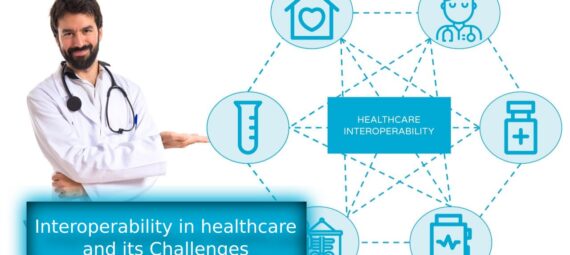Objective
Interoperability is one of the key prerequisites for any Electronic healthcare record products. According to the Healthcare Information and Management Systems Society (HIMMS) interoperability in healthcare is defined as “the ability of different information systems, devices and applications (‘systems’) to access, exchange, integrate and cooperatively use data in a coordinated manner, within and across organizational, regional and national boundaries, to provide timely and seamless portability of information and optimize the health of individuals and populations globally.”
NEED
Presently, most of the EHR information systems are developed in silos, causing redundancy/ ambiguity of information exchange/sharing. To uniform use of common terms and common methods for sharing information, interoperability allows user to extract required information from multiple sources through a single query.
Benefits of Interoperability
Helps Safeguard Patient Data:
Protecting patient privacy and securing their sensitive data is one of your top priorities. You should know that interoperability in healthcare helps to protect patients’ information. Instead of employees having to type in the same information about a patient multiple times, the system accesses the details it needs, such as from the Electronic Health Record or EHR system.
The fewer people who touch and update patient details, the less chance there is of the information going astray and into the hands of criminal hackers. Your IT department can set up strict rules about who is allowed to input and access this data, which makes it easy to monitor staff compliance as well as to perform audits if you suspect a data breach. Horror stories of patient confidentiality being compromised because of old fashioned, poorly networked computer systems will be a thing of the past
Assists Researchers Working for the Public Good (Collaboration)
The data that you amass during the normal course of events while diagnosing and treating patients can prove to be a goldmine of information for public health researchers. Interoperability allows your internal computer systems to connect with networks of computers that these scientists rely on for doing such things as epidemiology studies or to review the efficacy of a particular method of treatment
Improves Staff Productivity
When computer systems and databases are set up for interoperability, you will see a noticeable increase in productivity. From lowering the amount of the same data being redundantly entered (sometimes many multiple times) alone, you will speed up document processing. Working with digital documents exclusively (or at least converting paperwork to digital) saves time in finding and updating records
Exchange Data Better with Other Systems
Think of the various types of information that your staff needs to transmit and share with others. A referring physician will need reports of the CAT scan you ordered, for example, or you are providing data updates to an insurance company or Medicare/Medicaid. If you need to refer to an x-ray taken in your facility earlier in the day, the images will pop up on the display thanks to the interoperability in healthcare of connected databases
Better Experience for Patients
Reducing paperwork for staff and patients alike is a huge benefit that comes with interoperability. Patients won’t have to fill out the same repetitive forms and staff won’t have to rekey this information from paper into the database. What’s more, patients won’t need to keep explaining their situation, since the details will be right in their record for any staff who needs to see it before consultation or follow-up



